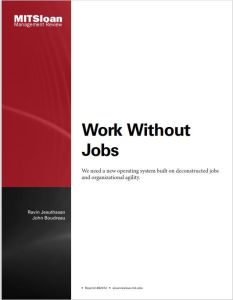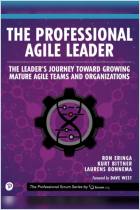加入 getAbstract 阅读摘要

加入 getAbstract 阅读摘要
Ravin Jesuthasan and John W. Boudreau
Work Without Jobs
We need a new operating system built on deconstructed jobs and organizational agility.
MIT Sloan Management Review, 2021
看看什么内容?
Work is evolving – learn how to evolve your work systems to keep pace.
Recommendation
For many leaders, work is evolving faster than their organizations can adapt: Traditional jobs are fracturing, the demands of agility are stressing the boundaries of traditional roles, and people are becoming unwilling to conform to old work structures. In an insightful article for MIT Sloan Management Review, two authorities on the future of work, human capital and organizational effectiveness offer a game plan for redesigning work to support agility.
Summary
About the Authors
Ravin Jesuthasan is a globally recognized futurist and consultant. He writes about the future of work and human capital. John Boudreau is professor emeritus at the University of Southern California’s Marshall School of Business and a senior research scientist at its Center for Effective Organizations.























Comment on this summary